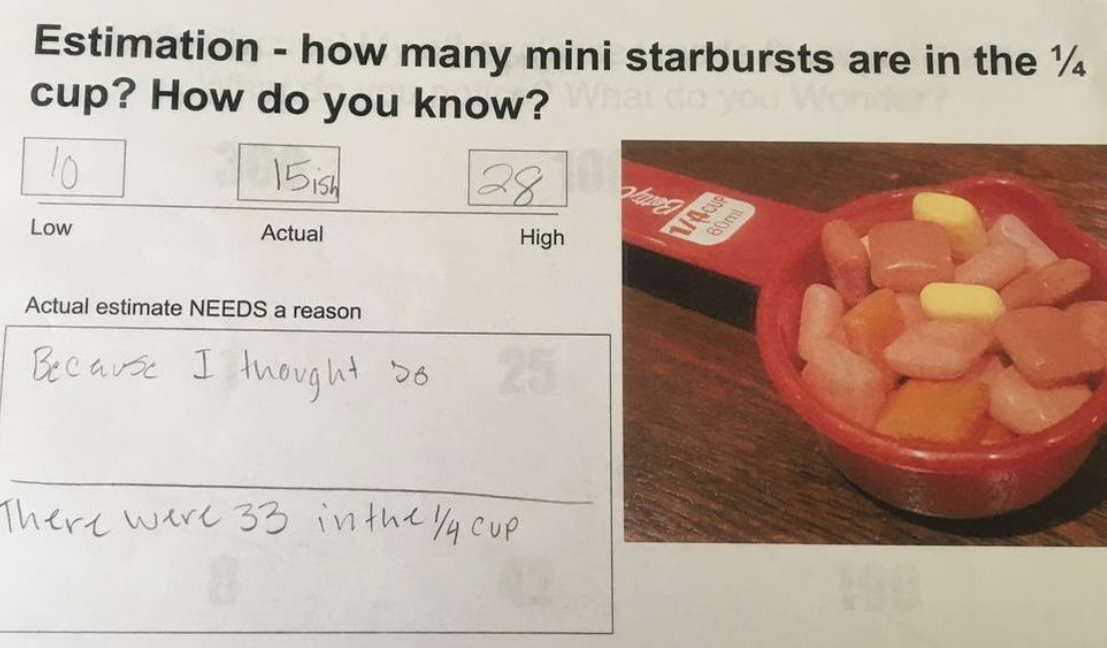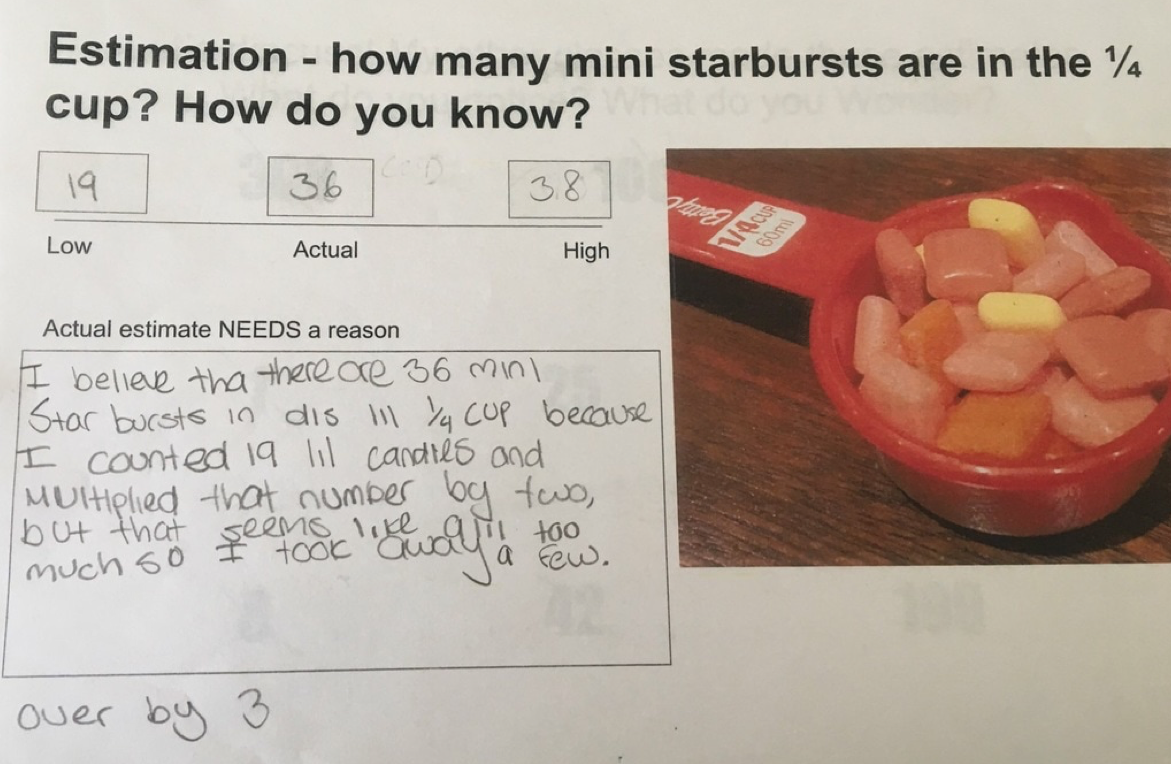By
Jen
McAleer, posted June 5, 2017 —
All
students deserve a seat at the mathematical table. We should convince students every
day that they do have mathematical
ideas of worth. Estimation and notice-and-wonder tasks provide opportunities for
all students to enter into the conversation. These low-entry, high-ceiling
tasks can create an equal playing field. Students cannot know the answer to
tough estimation problems, and no process to a solution is valued more than
another; notice/wonder activities often do not reference specific questions, so
there is no “it” to solve.
When I traveled to NCSM and NCTM this year, Christina Newell presented an
Ignite talk that spoke directly to my thoughts and experiences with estimating.
One of her major points was that students are naturally imperfect but often
precise in their understanding and description of the world. Her example came
from her child who struggled to find the words for a grilled-cheese sandwich,
which became “Hot bread with the cheese of America.” Imperfect, yet precise.
Estimation can be used as an entry point into the
imperfect, yet precise world of mathematics. The students I teach tend to struggle
a lot with procedures and math facts. Their learning profiles set them at a
natural disadvantage in a typical math classroom in which students memorize
procedures and do twenty problems of the same type, over and over. These
students often view quick computations and perfect answers as what it takes to
be good at mathematics. In fact, they convince themselves that they are not
good at mathematics and as a result do not find joy or intrigue in it. They
learn math for the test and then it’s gone, and topics are never connected.


Estimation helps make sense of the world and helps mathematize one’s surroundings. Over time, students refine their ability to estimate and start to apply more of the mathematics that they have learned. Look at these two examples of the same task.
Estimation should not
be a warm-up exercise or reserved for the end of the class. It should be the beginning
of a conversation about deeper mathematics. It can be an entry point for
students who typically are not welcome to the table mathematically because these
students struggle with procedures and see themselves as being non-contributors
to the class.
I am constantly
improving my own approach to estimating the world around me. I am curious and
intrigued by the world, and I use mathematics to be more precise in my
estimations. I am not aiming for perfection; it is awesome to just get close to
an answer. When I give an estimation activity to my students, it is not a one off,
it is a conversation and an entry point into deeper mathematics. My goal is to
have students walk away from my class and wonder about the math that surrounds them.
Estimation is a way to do that. Let’s start inviting all students in our class
to the table.
.png)
Jen
McAleer is the head of middle school mathematics (grades 6–8) at the Carroll
School in Lincoln, Massachusetts. The Carroll School serves students with
language- based learning difficulties who also tend to struggle with
mathematics. McAleer has been teaching middle school for ten years and has a
passion for giving all students a voice in mathematics and providing them with
opportunities to be and feel successful while working with higher-level
content, despite their struggles with procedures and computation. Reach McAleer
via Twitter at @jennifuhs4.